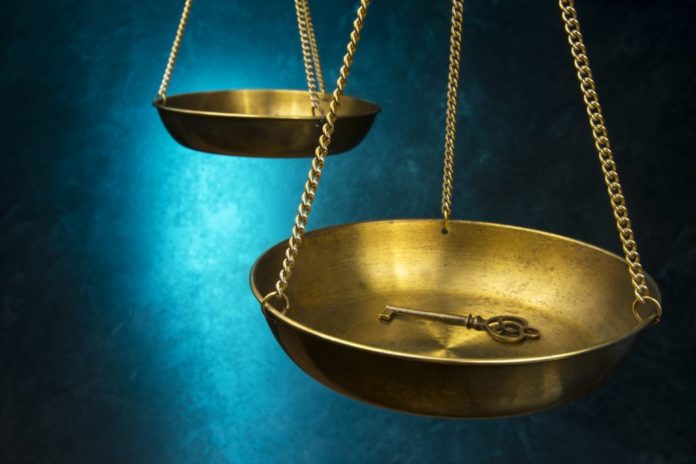“CBD legality is perhaps more confusing and misunderstood than any other legal issue, even among attorneys with vast experience in cannabis law.”
At a recent cannabis business conference, I was struck by the prevalence of products that contained cannabidiol, or “CBD,” as opposed to THC. CBD is one of more than eighty cannabinoids found in the cannabis plant, cannabinoids being the chemical compounds that interact with receptors in our brains. CBDs are non-psychoactive, which distinguishes them from their sibling cannabinoid, delta-9 tetrahydrocannabinol (THC). While THC and CBD may both be found in various cannabis strains, certain strains produce greater concentrations of CBD and only trace amounts of THC.
CBD popularity is a relatively recent phenomenon, but it has been increasing steadily, particularly as more research becomes available showing its broad healing powers and medical benefits. For example, several years ago Dr. Sanjay Gupta reported in a CNN documentary about the undeniable benefits of CBD oil for Colorado children suffering from a nasty form of epilepsy called Dravet syndrome. This led Gupta to reverse his position on the medical benefits of marijuana. Literally overnight, parents relocated to Colorado so their children could obtain the medicine. It is difficult to exaggerate the ensuing popularity and range of products marketed with CBDs, including water, chocolate, cosmetics, muscle rubs, and tinctures. I have even seen CBD oil marketed on Amazon.
Many of the companies selling CBD products claim their products are legal and distributed in all fifty states. Salespeople often say CBDs, unlike THC, are not illegal or that only products containing more than .3 percent of THC are illegal federally.
Unfortunately, these claims of legality are generally incorrect. As is often the case in the canna-business industry, particularly in California where I practice, the marketplace is out of step with cold legal reality. In fact, CBD legality is perhaps more confusing and misunderstood than any other legal issue, even among attorneys with vast experience in cannabis law. The purpose of this article is to clarify and demystify the legality of products containing CBDs.
The starting point for analyzing the legality of CBDs is federal law, which applies to all cultivation and distribution activities relating to cannabis products, even activities that do not cross state borders. The federal Controlled Substances Act, passed in 1970, makes it a crime to manufacture, import, possess, distribute, and even use “marijuana.” That is because the law classifies “marijuana” as a Schedule 1 controlled substance, based on the highly suspect premise that it has a high potential for abuse and no currently accepted medical use in the U.S. (To appreciate the absurdity of the federal position, one need look no further than the fact that approximately half U.S. states authorize marijuana use for medical purposes.) In any case, the definition of “marijuana,” and in turn what is illegal to cultivate or distribute federally, is set forth in 21 U.S.C. §802(16). The law provides:
The term “marihuana” means all parts of the plant Cannabis sativa L., whether growing or not; the seeds thereof; the resin extracted from any part of such plant; and every compound, manufacture, salt, derivative, mixture, or preparation of such plant, its seeds or resin. Such term does not include the mature stalks of such plant, fiber produced from such stalks, oil or cake made from the seeds of such plant, any other compound, manufacture, salt, derivative, mixture, or preparation of such mature stalks (except the resin extracted therefrom), fiber, oil, or cake, or the sterilized seed of such plant which is incapable of germination. (Emphasis added.)
In this way, federal law makes the entire cannabis plant illegal, except for the mature stalks and fiber from the mature stalks of the plant, derivatives and compounds manufactured or processed from the stalks or mature fiber (which would include oil), oil or cake made from the seeds or any other derivative or compound from the seeds, and sterilized seeds incapable of germination. Any other plant material or derivative is illegal federally. This definition of marijuana comes from the the 1937 Marijuana Tax Act, which, according to the legislative history, sought to exclude from the reach of illegality the components of the plant not thought to contain THC. Nonetheless, as noted above, the CSA does not define marijuana illegality based on THC content or exclude from the definition CBDs, industrial hemp, or mixtures containing .3 percent or less THC. In fact, CBD is not even defined within the CSA.
The legality of a product containing CBDs thus depends on the plant material from which it was derived, not its percentage of THC. If, for example, CBD oil is made from flowers of a cannabis plant, then that material is illegal federally. Conversely, if the oil derived from mature plant stalks, then it is legal federally, provided it was cultivated outside the U.S. (more on that later).
The fact that there are CBDs in a product derived from hemp or industrial hemp is a red herring and for the most part irrelevant to the analysis of legality. Historically, the label “hemp” has been applied to varieties of cannabis plants used for purposes other than THC content, because hemp tends to grow taller and produce larger stalks. To that end, hemp varieties have been bred to decrease their THC content; generally, they contain less than 1 percent THC—not enough for any physical or psychological effects, as compared to marijuana strains with anywhere from 2 percent to more than 20 percent THC.
For example, twenty-six varieties of hemp with low levels of THC and very high fiber content of 30 percent to 40 percent are certified by the European Union. “Hemp” thus becomes the label often applied to cannabis strains that produce relatively higher amounts of CBDs. Industrial hemp is merely a different label for hemp varieties. In the European Union and elsewhere, “industrial hemp” is defined as cannabis with .3 percent THC or less. If cannabis meets the definition of industrial hemp, it is legal. But in the U.S., with a narrow exception, neither “industrial hemp” or “hemp” generally enjoy any exception from the broader CSA definition of marijuana.
However, the federal Agricultural Act of 2014 created a great deal of confusion about this terminology. The Act provides that that “industrial hemp” means “the plant Cannabis sativa L. and any part of such plant, whether growing or not, with a delta-9 tetrahydrocannabinol concentration of not more than 0.3 percent on a dry weight basis.” At first glance, this definition, which follows the European Union’s, appears to carve out an exception to the CSA for any cannabis derivative containing less than .3% THC. Unfortunately, the legislation does not offer protection to the overwhelming majority of hemp and CBD cultivators and producers. Rather, as Section 7606(a) of the act makes clear, it only protects the cultivation of “industrial hemp” by institutions of higher education or state departments of agriculture where hemp is grown for research as long as the relevant state has opted into the program by passing its own enacting legislation. In this way, the 2014 act offers no protection to ordinary canna-businesses selling products with CBDs or derived from hemp products otherwise within the reach of the CSA.
The seminal case that analyzes the legality of hemp products in the U.S. under the CSA’s definition of marijuana is Hemp Indus. Ass’n v. Drug Enforcement Admin., 357 F.3d 1012 (9th Cir. 2004) (“Hemp Industries II”). There, manufacturers and distributors of hemp seed oil and sterilized hemp seed that contained trace amounts of THC challenged a Drug Enforcement Administration rule that sought to ban any cannabis plant derivative containing any amount of THC. The case provided the United States Court of Appeals for the Ninth Circuit with an opportunity to analyze and discuss the scope of the CSA’s marijuana definition. The court referred to the products in issue as derivatives of “non-psychoactive hemp,” which it defined as “hemp stalks, fiber, oil, and cake made from hemp seed, and sterilized hemp seed itself—i.e., those substances excluded from the definition of marijuana under 21 U.S.C. § 802(16).” Although the court used this terminology to distinguish between the illegal and exempted components and derivatives of the cannabis plant, it did not hold that non-psychoactive derivatives, or pure CBD products, were excluded from the definition of illegal marijuana. Indeed, the subject of CBDs did not enter into its analysis whatsoever.
Nonetheless, the court struck down the DEA’s rule because the rule sought to make illegal naturally occurring THC ostensibly derived from plant material exempted from the CSA’s definition of “marijuana.” The court noted that the “non-psychoactive hemp in Appellants’ products is derived from the ‘mature stalks’ or is ‘oil and cake made from the seeds’ of the Cannabis plant, and therefore fits within the plainly stated exception to the CSA definition of marijuana.” While Hemp Industries II did not directly address CBDs, the logic and holding of the case applies equally to products containing CBDs, provided they come from exempted plant material.
The DEA thereafter embarked on a strategy to get around the holding in Hemp Industries II, seemingly focused on outlawing CBDs regardless of whether they were sourced from exempted plant material. In 2011, the DEA proposed a rule to add “marijuana extracts” to Schedule I, which it defined as “extracts that have been derived from any plant of the genus cannabis and which contains cannabinols and cannabidiols.” The DEA even assigned a unique code number, 7350, to marijuana extracts.
As far as we can tell from our research, this proposed rule has never been adopted formally, and neither “marijuana extracts” nor “cannabidiol” are included in the DEA’s Schedule of Controlled Substances, according to the federal register or the CSA. This minor detail, however, has not prevented the DEA from claiming that CBDs are banned Schedule I substances. For example, in June 2015, DEA Deputy Assistant Administrator Joseph T. Rannazzisi told the Senate that “CBD derived from the cannabis plant is controlled under Schedule I of the CSA,” and that the exempted portions of the cannabis plant cannot produce cannabinoids. This begs the question of whether CBDs may be derived from portions of the plant exempted from the definition of “marijuana.” One of my clients who is an expert in the area insists it cannot, whereas a multitude of CBD product manufacturers claim otherwise. If in fact CBD cannot be sourced from mature plant stalks or seed, then CBDs would de facto be Schedule I controlled substances, but if that were so, then why would the DEA propose a rule to add “marijuana extracts” to the list of Schedule I controlled substances?
Either way, there are two final points to make on this subject. First, even for CBD products derived from exempted portions of plant material, to be legal that material must be imported from another country. See Kiczenski v. Ashcroft, 2006 WL 463153, *3 (E.D. Cal. 2006). This is because the exempted portions of the plant (i.e., mature stalk) cannot be cultivated separately from the leaves and flowers, which are banned. This leads to problems, because oil and plant material grown in other countries such as China is reportedly low grade.
Finally, even if you are making or selling a CBD product using exempted plant material, that still does not mean you can legally sell that product in all fifty states. Each state has its own definition of marijuana, which (as in California) may not exempt the same plant material as the CSA, may expressly make it illegal to market CBD products, or may require licensing under that state’s medical marijuana program.
The recommendation is to consult with competent legal counsel before embarking on a business model that could subject you to criminal or regulatory problems. You may still opt to embark on the activity, but better to know the potential consequences in advance.
Michael Chernis of Chernis Law Group P.C. in Santa Monica, California, is an attorney with 20+ years of experience. A graduate of Fordham Law School in 1994, he represents collectives, dispensaries, cultivators, manufacturers and other medical cannabis clients, and lectures frequently on California cannabis law compliance issues.











